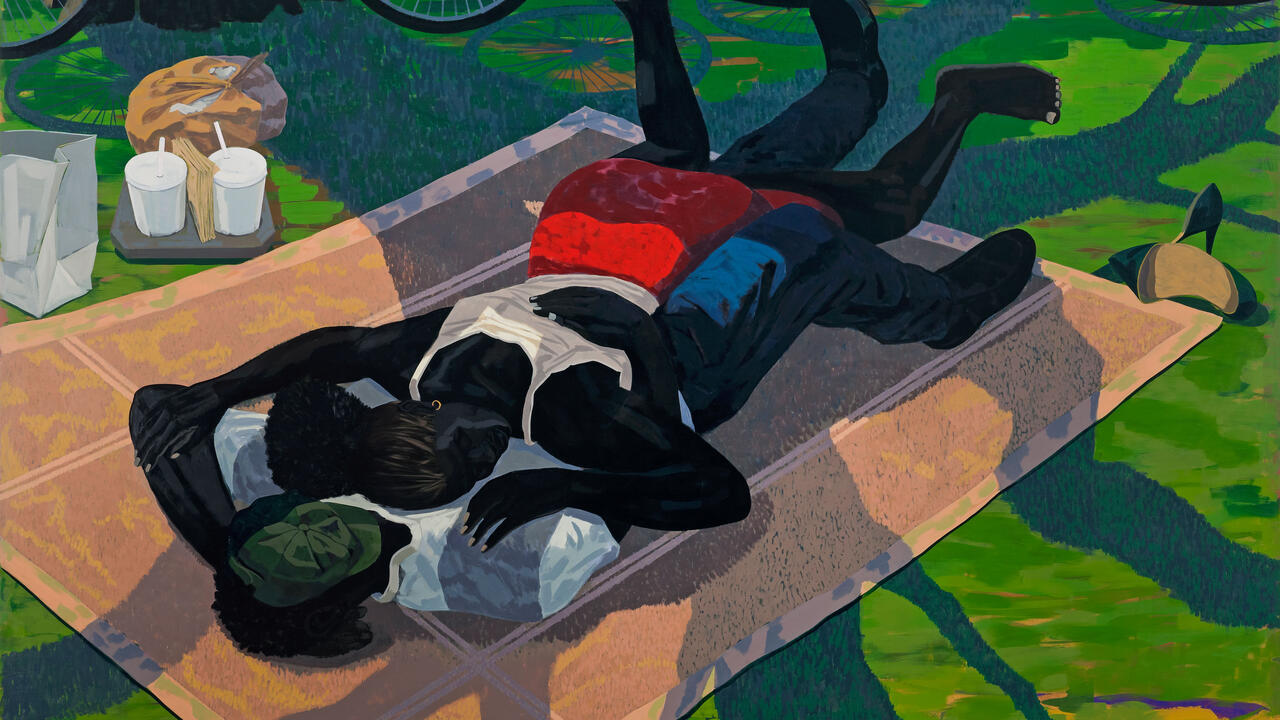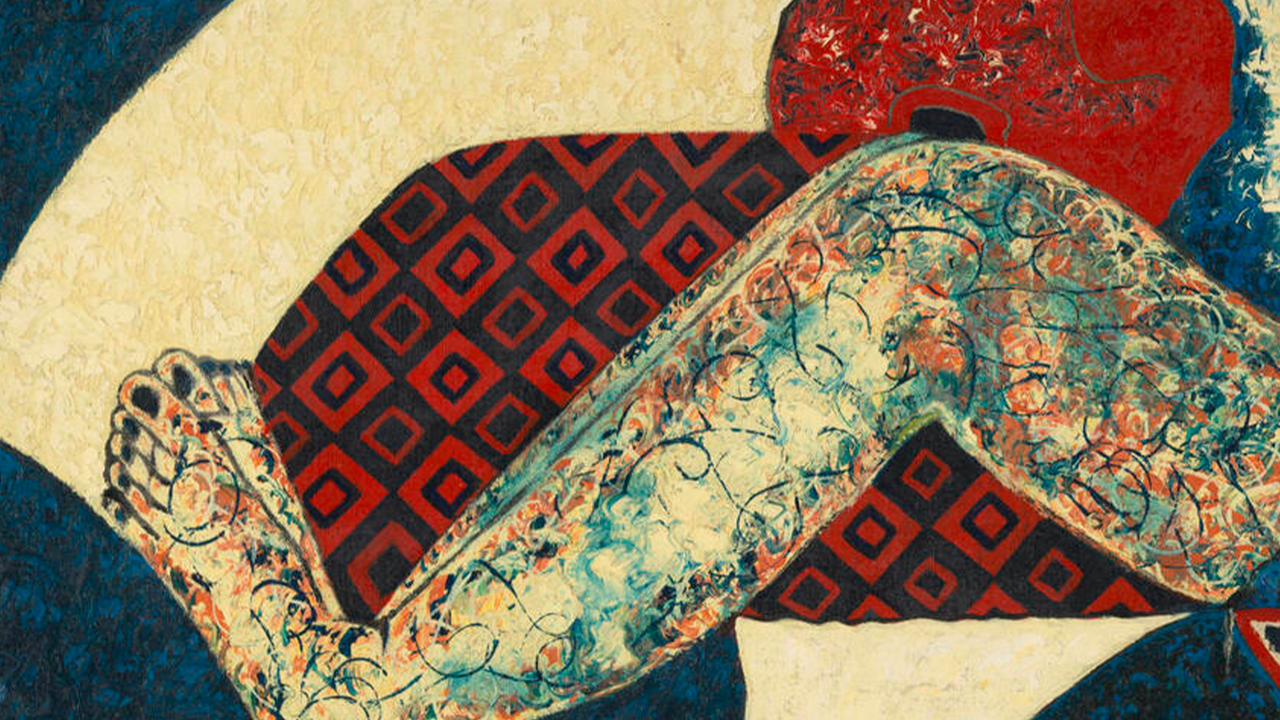Still on Target
A major exhibition in London opening this weekend shows that at 87, Jasper Johns is as commanding an artist as ever
A major exhibition in London opening this weekend shows that at 87, Jasper Johns is as commanding an artist as ever

Jasper Johns is one of the most significant and influential artists of the twentieth century, but the Royal Academy’s exhibition ‘Jasper Johns: Something Resembling Truth’, will be the first survey of his work to be staged in London since 1977 - and a major highlight of Frieze week in London. Its curator explains how it came about.
Known for his iconic images of familiar objects – flags, targets, numbers, maps and light bulbs – the vivid realism and detached presentation of Jasper Johns’s paintings and sculptures introduced new possibilities for art when he first emerged in the late 1950s. At the time, Johns’s work seemed like a statement of opposition to the Abstract Expressionist movement that then dominated the American art world, but more recent thinking, which is evident in this exhibition, suggests continuity instead. In fact, Johns’s befriended many of the movement’s key artists: Jack Tworkov was a friend, he got on well with Barnett Newman, and Mark Rothko acknowledged Johns’s importance early in the younger artist’s career. De Kooning visited Johns’s first exhibition at the Castelli Gallery in 1958.
But it was Johns’s relationships with the choreographer Merce Cunningham, the composer John Cage and fellow artist Robert Rauschenberg which had the most significant impact on the direction of his art. They were all a little older, and the performative element of both Cage and Cunningham’s work had a permissive influence. For Johns, the viewer, drawn in by texture and beauty, is necessary to complete the work. His additional interest in European Dada – and its major exponent Marcel Duchamp – also led to an enduring fascination for the presentation of paradoxes and ironies, which has continued to underpin his work over the decades.
The viewer, drawn in by texture and beauty, is necessary to complete the work
Characterised by the repetition and variation of like motifs, and by simultaneous periodic shifts to entirely new subjects and modes of composition, Johns’s pictorial language has over the decades yielded an extraordinary richness of visual, intellectual and psychological engagement, while a constant concern with the self and existence lends a deeply autobiographical element to his work. By 1955 he had embarked on his iconic flag and target works, and these, along with the number and letter works, established a new vocabulary in painting.

His treatment of iconography and the appropriation of objects and symbols made the familiar unfamiliar – an effect which he achieved not only with composition and tone, but also by virtue of the complexity of the textures he created on the painted surface, achieved by adopting techniques such as collage and the use of encaustic. This employment of differing and numerous layers of media imbued the works, and the everyday symbols depicted, with the sense of a palimpsest of history and interpretation. During the 1960s, Johns expanded both the emotional range of his art and the elements of his pictorial vocabulary, adding devices that marked and measured his surfaces, like objects from the artist’s studio and imprints and casts of the human figure. He also adopted printmaking as another form of artistic expression, soon becoming recognised as one of the most significant printmakers of the time. The works of the 1970s are dominated by an abstract pattern, referred to as ‘crosshatchings’. And by the 1980s, Johns had introduced a kind of illusionist picture space in which he placed an array of images that engage in new ways with the ambiguities of perception and ongoing themes involving memory, sexuality, and the contemplation of mortality. From this time, Johns increasingly incorporated tracings and details of works by artistic predecessors including Matthias Grünewald, Edvard Munch and Pablo Picasso. By the early 2000s Johns had embarked on the pared down and more conceptual ‘Catenary’ series (1997–2003) which, along with other recent works such as ‘5 Postcards’ and ‘Regrets’, shows the rich productivity and vitality of this late phase of his career, and a strong strand of memory and awareness of death.

My interest in Johns goes back years and by 2010, I started to develop the idea of a large exhibition at the Royal Academy. I was intrigued by the later work – such as the ‘Catenary’ and ‘Regrets’ series – and by the fact that he had been so rarely exhibited in the UK. I spoke to him by phone for the first time in early 2013, following an introduction by a mutual friend. He knew that I worked at the Royal Academy and that I had curated the large Hockney landscape exhibition the previous year. Although not close, Hockney and Johns have know each other for a long time, and shown interest in each other’s careers.
The latest pieces are a revelation – his unbelievable ability to paint is as strong as ever.
Johns has a rich, deep voice and speaks carefully, weighing his works. During the call, he made a comment about my timing, which I didn’t understand right then, suggesting I had sensed that ‘there was something in the air’. Later I realised he was referring to his ‘Regrets’ series, which he was working on at the time, and which no one had yet seen. The work was first shown at MoMA, New York, in September 2014. Our initial meeting took place at his studio in Connecticut where I presented the first broad outline of the exhibition. He didn’t say much, but was friendly and encouraging. Later, the idea to arrange the show as a thematic survey emerged, and once we put it in front of Johns, he felt it made sense too. It describes how he thinks. So, for example, painting as an object is explored in one gallery; words and voices which references poets in another. My main concern was that a British audience would just think of flags and targets, and we wanted to ensure we presented an insight to how Johns approaches his art. It was very much the intention from the start that the exhibition would cover Johns’s whole career, including one work which was only completed in the last few months and will be being shown for the very first time. The latest pieces are a revelation – his unbelievable ability to paint is as strong as ever.
Johns considers things so carefully that whenever he makes a suggestion, he is always absolutely right
It was important to me and my co-curator, Dr Roberta Bernstein, that the artist be involved both in the selection of artworks and comment on the argument of the exhibition. But Johns is very respectful of the role of the curator and does not expect, nor indeed wish, to be involved in the detailed process of selecting and arranging work. His comments on the overview and layout were extremely astute and considered, and his involvement has resulted in a stronger and tighter exhibition, particularly regarding the hang. He considers things so carefully that whenever he makes a suggestion, he is always absolutely right. I learnt that very fast.

His focus and dedication to his work is as strong as ever, as is the extent to which he values and protects his time in the studio. His longterm practice of interrogating the same concerns over a variety of differing media continues to this day. His deep interest in art history and enthusiasm for visiting exhibitions is unabated. He said how much he’d enjoyed the ‘Picasso Sculpture’ exhibition at MoMA in autumn 2015, he liked the exhibition catalogue for my Abstract Expressionism exhibition in 2016, and was disappointed that the Academy’s exhibition of 1930s American painting, ‘After the Fall’ (2017), wasn’t travelling to New York.
I hope the exhibition highlights Johns’s constant capacity for innovation, while revealing the re-examination and development of many of the early themes and motifs which have underpinned his work from the 1950s up to the present day. It is such a rare privilege to have contact with the artist himself, and the sharp focus and complexity of his intellect, articulated by technical brilliance, is now clearer to me than ever before.
Main image: Jasper Johns in his studio, 2005. Courtesy: Jeff Ridel/Contour Collection/Getty Images




















